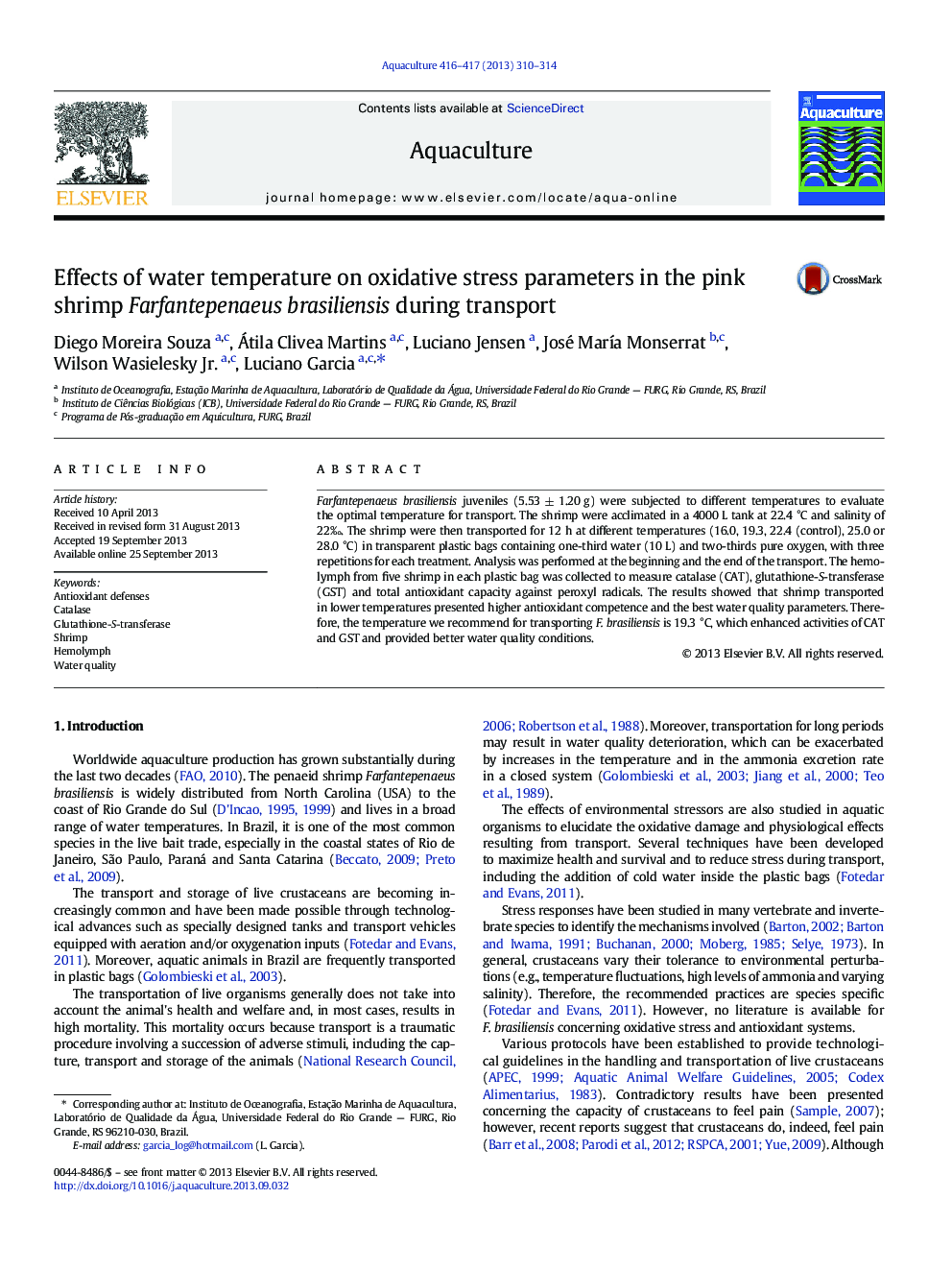| Article ID | Journal | Published Year | Pages | File Type |
|---|---|---|---|---|
| 2422053 | Aquaculture | 2013 | 5 Pages |
Farfantepenaeus brasiliensis juveniles (5.53 ± 1.20 g) were subjected to different temperatures to evaluate the optimal temperature for transport. The shrimp were acclimated in a 4000 L tank at 22.4 °C and salinity of 22‰. The shrimp were then transported for 12 h at different temperatures (16.0, 19.3, 22.4 (control), 25.0 or 28.0 °C) in transparent plastic bags containing one-third water (10 L) and two-thirds pure oxygen, with three repetitions for each treatment. Analysis was performed at the beginning and the end of the transport. The hemolymph from five shrimp in each plastic bag was collected to measure catalase (CAT), glutathione-S-transferase (GST) and total antioxidant capacity against peroxyl radicals. The results showed that shrimp transported in lower temperatures presented higher antioxidant competence and the best water quality parameters. Therefore, the temperature we recommend for transporting F. brasiliensis is 19.3 °C, which enhanced activities of CAT and GST and provided better water quality conditions.
